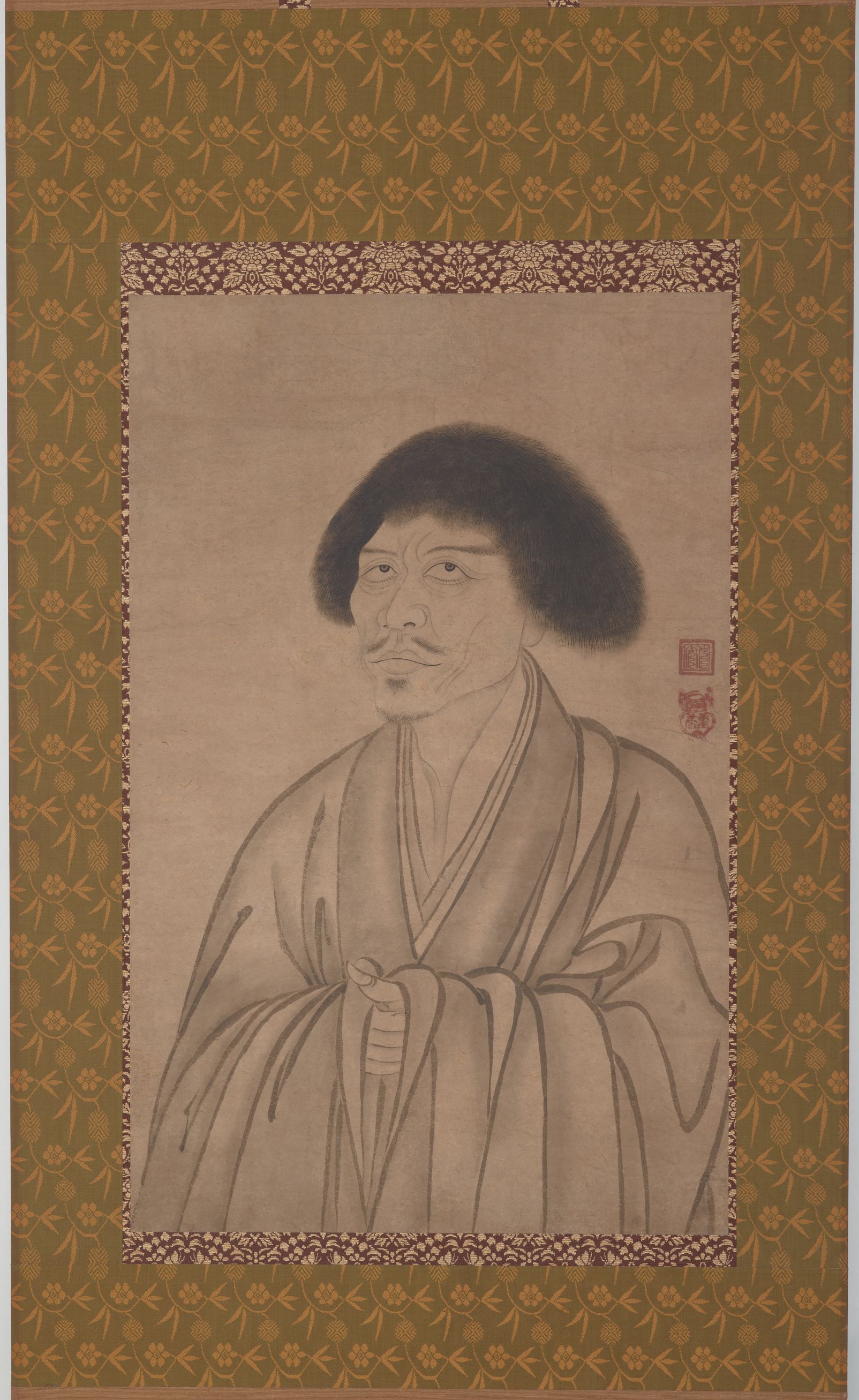National Museum of Asian Art Illustrates the Visual, Spiritual and Philosophical Power of Zen in Its Inaugural Exhibition for “The Arts of Devotion”

Portrait of a Gaofeng Yuanmiao, 1238 - 1295. Chūan Kinkō (mid-15th century) Japan, Muromachi period, 1392-1568 Ink on paper. H x W (image): 58.4 x 37.4 cm. Gift of Charles Lang Freer, Freer Gallery of Art. F1911.317a-b
For the first time since the museum’s founding nearly a century ago, the Smithsonian’s National Museum of Asian Art will exhibit the breadth of its medieval Zen ink paintings, highlighting rare and striking works from Japan and China to unveil the world of medieval Japanese monasteries. Accompanied by ceramic and lacquer works, “Mind Over Matter: Zen in Medieval Japan” tells the story of the religious tradition’s birth in China around the fifth century and its expansion to Korea, Japan and eventually the United States. The exhibition will be on view in the museum’s Freer Gallery of Art from March 5 through July 24.
“Zen is a religion that is firmly rooted in the past, but deeply responsive to the present,” said Chase F. Robinson, the museum’s Dame Jillian Sackler Director. “How Zen monks expressed their religiosity and politics can teach us lessons about ourselves and our own time.”
As visitors journey through the exhibition, they will encounter monastic Zen paintings from medieval Japan (ca. 1200–1600), which are considered one of the great artistic traditions of East Asia and beyond. The abbreviated, seemingly impromptu paintings in monochrome ink have influenced artists and enthusiasts for centuries. Many of the most accomplished artists of this era—Mokuan, Ryozen, Shubun, Sesshu, Sesson and many others—were Zen monks credited by later generations as the creators of a unique and remarkable legacy of ink painting. Zen monk painters inspired a number of the most important professional painting lineages of Japan’s early modern period (ca. 1600–1868) and formed a thematic backbone of Japanese art and cultural identity in modern times. The exhibition is co-curated by Frank Feltens, the Japan Foundation Associate Curator of Japanese Art at the National Museum of Asian Art, and Yukio Lippit, the Jeffrey T. Chambers and Andrea Okamura Professor of History of Art and Architecture at Harvard University.
“Although Zen has come to embody notions of stillness and peace of mind, it is also a powerful philosophy embraced by monks over the centuries to challenge conventions of Buddhism and art,” Feltens said. “Ink is a basic yet incredibly versatile material in East Asian painting, enabling a wealth of individual expressions.”
As the inaugural exhibition of The Arts of Devotion initiative, “Mind Over Matter: Zen in Medieval Japan” seeks to enhance understanding of the religion and to foster empathy and respect among the public. In order to highlight key aspects of Zen as it is practiced today, the museum invited multiple perspectives: accompanying many of the works is commentary from high school students in Washington, D.C., award-winning koto musician Yumi Kurosawa and Zen priest Rev. Inryū Bobbi Poncé-Barger. Their observations reflect the ever-evolving nature of Zen and its teaching and its presence in the contemporary United States. A high school student from School Without Walls describes how the monochromatic ink paintings challenge expectations of Zen and Buddhism, while Poncé-Barger reflects on the expanded role of women in Zen practice in today’s society.
“Zen, like other religions, has never been a faith frozen in time,” said Hussein Rashid, the project director for The Arts of Devotion. “It evolves and acquires new meaning as new practitioners engage with the religion. ‘Mind Over Matter’ demonstrates the continuity of Zen tradition and the transformation of the religion over time and place.”
Additional highlights include a one-of-a-kind digital animation showing how an ink painting is made and “Voices of Zen: Contemporary Perspectives on Medieval Japanese Zen,” an online interactive feature that contains exclusive audio content from the community and curatorial voices. Contributors offer their individual perspectives on three important Japanese works from the exhibition. “Voices of Zen” will launch on the museum’s website prior to the exhibition’s opening.
“Guided by our commitment to experimentation, we sought to expand the reach of the exhibition to online audiences with a digital interactive and exciting animation,” Feltens said. “The cutting-edge animation and community voices create new avenues for engagement with and understanding of these artworks and Zen’s presence in our world.”
“Mind Over Matter” and The Arts of Devotion was made possible by Lilly Endowment Inc. Support for ”Mind Over Matter” and the museum’s Japanese art program is provided by Mitsubishi Corporation.
About the Smithsonian’s National Museum of Asian Art
The Smithsonian’s National Museum of Asian Art is committed to preserving, exhibiting and interpreting exemplary works of art. It houses exceptional collections of Asian art, with more than 45,000 objects dating from the Neolithic period to today. Renowned and iconic objects originate from China, Japan, Korea, South and Southeast Asia, the ancient Near East and the Islamic world. The museum’s Freer Gallery of Art also holds a significant group of American works of art largely dating to the late 19th century. It boasts the world’s largest collection of diverse works by James McNeill Whistler, including the famed Peacock Room. The National Museum of Asian Art is dedicated to increasing understanding of the arts of Asia through a broad portfolio of exhibitions, publications, conservation, research and education.
The National Museum of Asian Art was the Smithsonian’s first dedicated art museum and the first art museum on the National Mall. Since opening its doors as the Freer Gallery of Art in 1923, it has acquired an international reputation. The museum is preparing for its centennial in 2023—a milestone celebration and a springboard for the museum’s transformative vision for its next century, which will broaden and deepen the museum’s impact and reach, both onsite and online.
# # #
SI-45-2022
